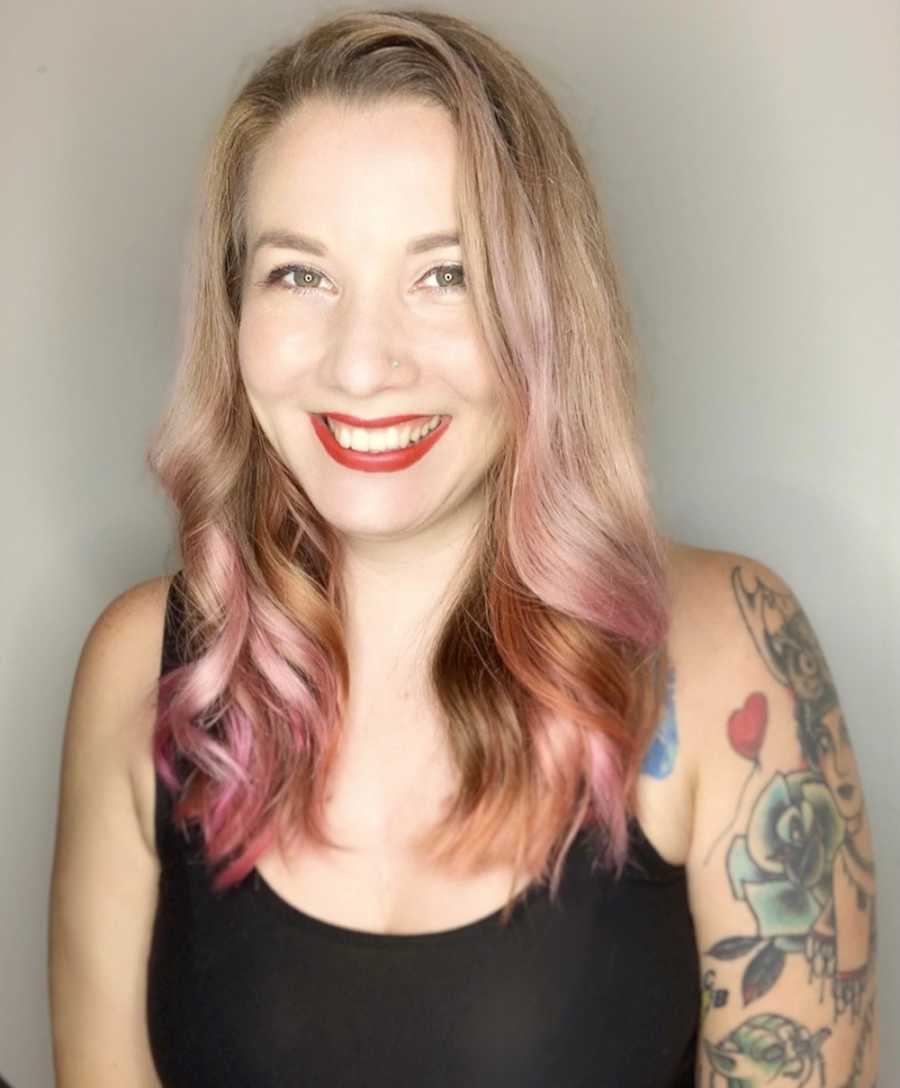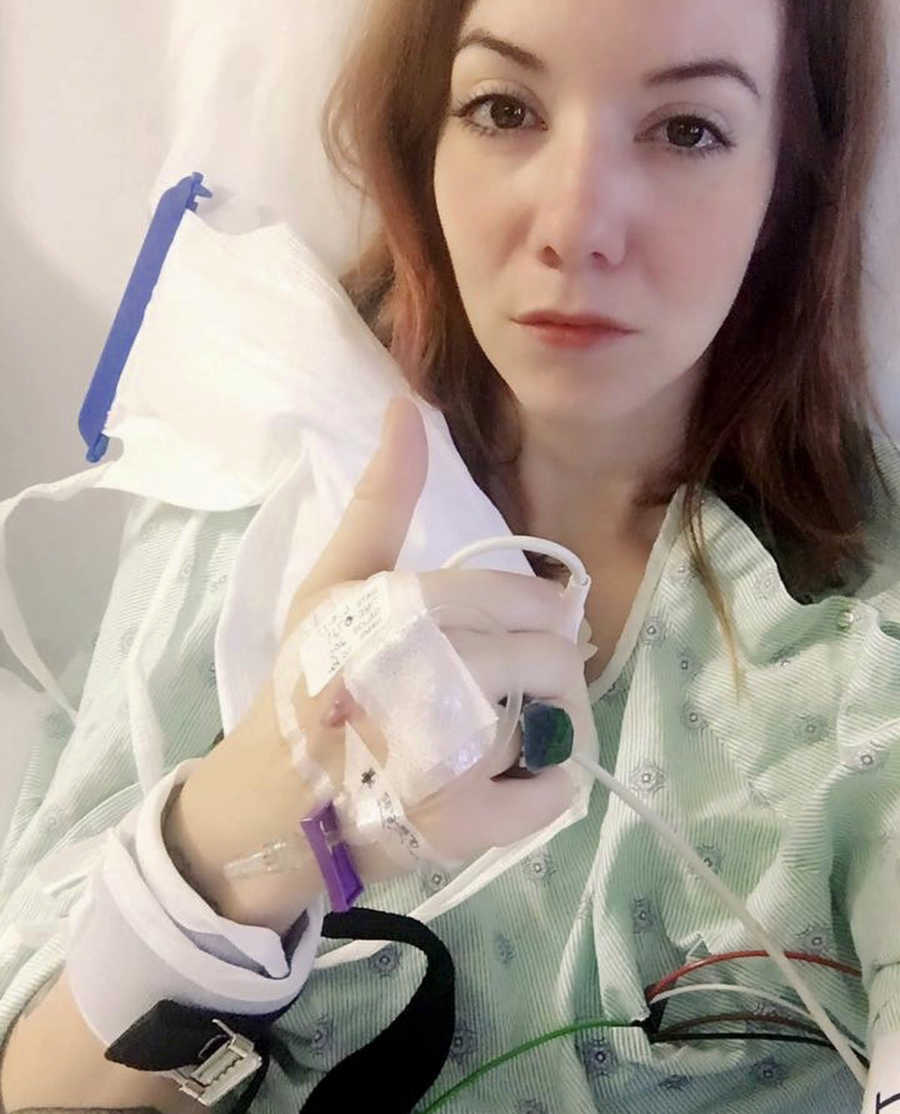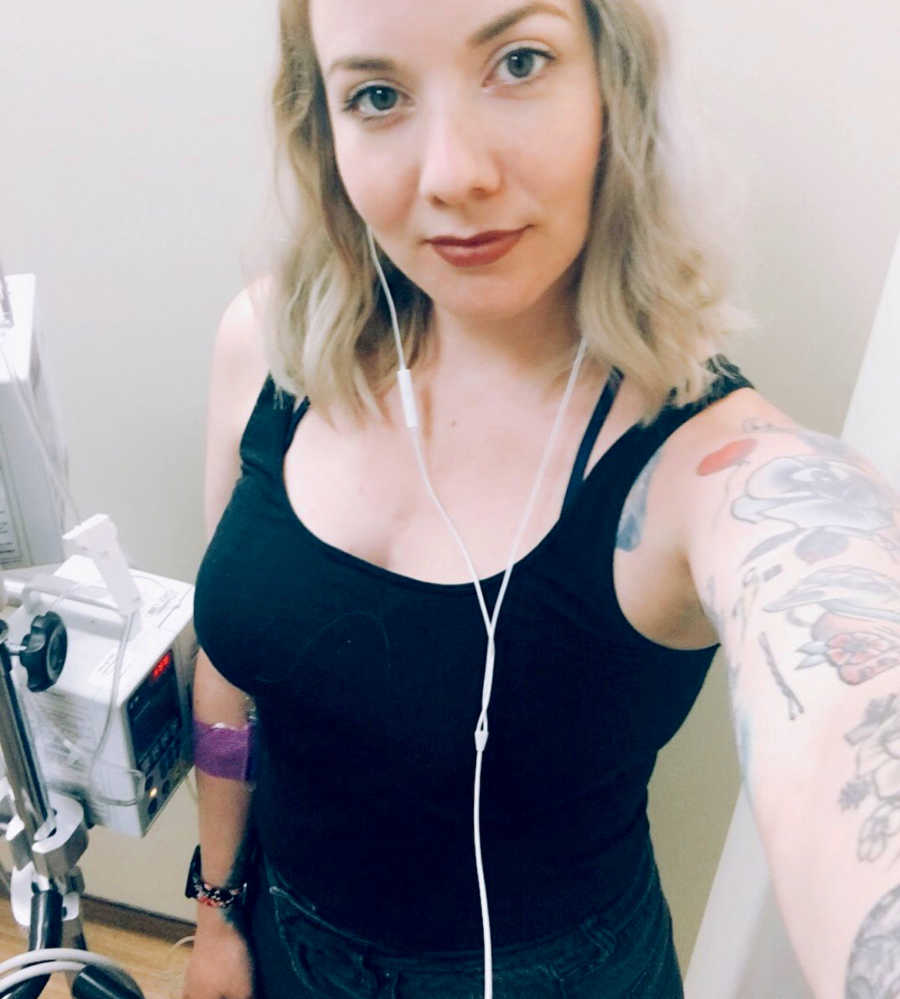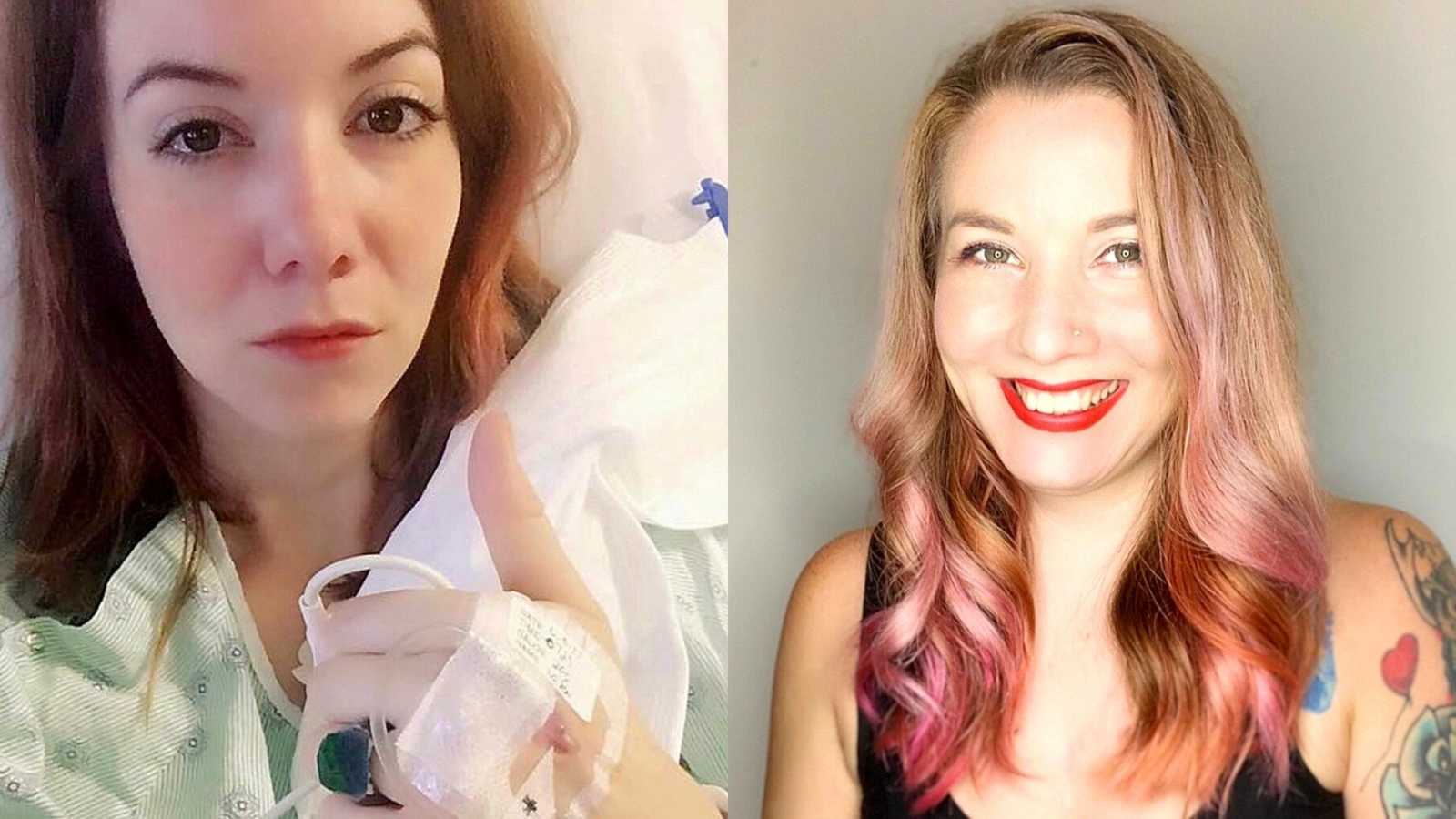“Many times while I am standing, a wave comes over me. My entire body slowly goes numb. My pulse throbs in my head and my ears start to ring. My vision blurs or fades and everything feels like it is in slow motion. I smile and nod through a conversation, bracing myself onto whatever is near me. Perhaps it’s a wall; I lean and hope I don’t go down. I continue on through a conversation with a few yawns. Slowly the numbness fades and my vision returns. This is my norm. This is every day and it’s something that I am so used to. Migraines, chronic pain, heart palpitations, vertigo, sleep apnea, low blood pressure, and gastrointestinal issues are a few other daily symptoms I manage.

I have a connective tissue disorder called Ehlers-Danlos Syndrome (EDS). Connective tissue is very abundant in the human body, including: tissues, cartilage, bone, and blood. This disorder is systemic and affects the entire body due to genetic coding that alters the production of the protein. Having EDS means that I have to see a gastroenterologist, cardiologist, electrophysiologist, pulmonologist, neurologist, rheumatologist, pain management, physical therapist, and of course a primary care physician (on a regular basis). How do I have time for that? I don’t. Usually I prioritize and put some issues on the back burner until they become more serious. It is a full-time job.
I have had many health issues, surgeries, and procedures throughout my life. This includes a pacemaker, four cardiac procedures, and open-heart surgery. I was also born with a rare congenital heart condition called Wolff-Parkinson-White syndrome (WPW). As a child, I could feel my heart racing like a hummingbird. When I would complain about it I was told it is normal when you run around. It wasn’t until junior high when I took my regular walk to the school nurse’s office to say my stomach hurt, a common excuse to get out of gym. I hate gym class because my face would get red and I felt horrible. She noticed the discoloration of my face and took my pulse, which was too fast to count. She called my parents and 911. By the time the ambulance came, my heart rate was normal. Eventually my parents were trying to ‘catch’ the rhythm so they started taking me to the ER, only to discover that my heart was perfectly normal each time. I would get sent home with no answers. Finally, a cardiologist put an event monitor on me and by the time I got home I had an event. We called it in and the cardiologist said it was Supraventricular tachycardia (SVT). My heart was going up to rates in the 250s on a regular basis, several times per day. At the time there was not a lot of knowledge on SVT so I was expected to outgrow it. When I was 19, my episodes were up to 20-50 times per day, lasting anywhere from 30 seconds to 20 minutes. I had a cardiac ablation and was then diagnosed with WPW. Over several years I had three more ablations and yet still had SVT.
Keep in mind I also had severe stomach issues, chronic pain, chronic fatigue, migraines, and many other symptoms also since childhood. These symptoms went onto the back burner as my arrhythmias were the main concern. in my early 20’s, something was off. I could feel every beat of my heart and it felt heavy. I could not walk and talk or I would get short of breath. This was especially hard for me because I loved to pace and talk on the phone, or walk with friends while having a conversation and I couldn’t. I kept getting dismissed. I went to the ER here and there over several years and was told I was fine since my rhythm was normal. Finally, after telling the ER physician I never had a murmur, he decided to order an echo. The echo showed I had severe aortic insufficiency, meaning the blood was back flowing into my heart and working harder. Because of my age, it seemed that physicians didn’t know what to do with me. At one point, I was in the hospital for a week as two surgeons debated on an aortic valve replacement and an understanding of what caused this. They were nervous. They had no answers. I asked to be sent home so I could find someone who felt more confident in helping me. I finally found a surgeon and at 26, I had an aortic valve repair. I have made it 10 years and now my valve is rated a 4/10. My next open-heart surgery will be when my valve is a 3/10, which may be soon. This time, I would get a tissue valve. No one knows if the valve is defective from my connective tissue disorder or if it is from one of the previous cardiac ablations, since it appeared to be a tear.

When you have a valve replacement, you have to have it replaced again as the tissue wears out. For the rest of my life I will have to have surgeries to keep up with my heart. I will also require a new pacemaker every seven years. I have never known life any other way than this. A few years ago I had a hysterectomy due to endometriosis and cervical cancer. I had endometriosis since I started my cycle, which was at the age of 15. I tried every birth control to manage it but they made me very ill (migraines, spotting, vomiting). I had two endometrial ablations but they were unsuccessful. I was told to get a hysterectomy but I was scared. After a routine annual visit, I got a call that I had cancer cells. I had the cone procedure but the margins were still positive with microinvastions. The next step was the dreaded hysterectomy, which I later regret not doing years sooner. Endometriosis affected me in many ways. I had severe depression and anemia. My cycles felt like childbirth and made me slur my speech and struggle to keep my eyes open during that week. I felt drunk. It was bad that I had to quit a job after they changed the dress code to khaki pants. There was no way I could ever wear light pants. Cervical cancer was scary but I was fortunate to have caught it early enough to not need further treatments after the hysterectomy.
I am in my thirties and sometimes I wonder what my future will look like. I try my best to stay healthy and prioritize self-care. I am lucky to have a supportive family: a husband and three kids. I had children at a young age (19) and am so grateful because I would not have been able to otherwise. Relationships were very hard to juggle with depression and chronic illness. The people I dated would get tired of it, call me a hypochondriac, or just become desensitized to it. My husband is so caring and supportive. Never settle for less than that. The biggest piece of relationship advice I can offer is that you are not a burden. If someone acts like you are then they are the real burden. You are worthy. Never forget that. I spent years of my life with no self-worth and I regret that so much.

I spent a long time ignoring my mental health. I was told by doctors, most of my life and up until 3 years ago when I had genetic testing done, I was healthy and it was ‘all in my head.’ Despite my cardiac history, I was labeled as having anxiety. When I finally had a physician believe me, I was able to get the tests I needed to essentially prove my need for a pacemaker. I found a new electrophysiologist that I switched to after many years of being dismissed. He did a Tilt Table Test and the results showed that I had a severe cardioinhibitory response. That coupled with an event monitor, that caught a low rhythm in the present of walking out of an appointment and fainting, was my ticket to getting answers. Basically, my heart rate would randomly plummet, then shoot back up into a chaotic rhythm. The pacemaker keeps my heart rate from dropping and I can also take medication to prevent my heart from going into arrhythmias. I should have had a pacemaker ten years ago to treat the documented heart rates in the 30s and to allow me to take medication to slow my heart, which prevents the fast rates. Instead, I had to deal with two contradicting rhythms where treating one could worsen another. Seeing a geneticist also helped to validate my health issues and diagnoses. I truly think geneticists should be more intertwined in health management and more mainstream. Why did I have to miss out on a life of management and wait until my mid-thirties when neglect turns into disability?

Patients like me are afraid to discuss that they may have anxiety or depression in fear of their health issues getting dismissed.After I was able to finally get a diagnosis and get my health properly managed, I was able to deal with my mental health. I was diagnosed with severe major depressive disorder, which is now well managed. I also have PTSD from my health issues, which I personally refer to as Post Traumatic Health Disorder (PTHD). For example, when I have a heart arrhythmia, I get really scared because it makes me think of the more serious episodes where I could have lost my life. It makes me think of the doctor who laughed at me. It brings me back to the close calls and feeling like ‘what if they don’t believe me?’
Picture this: When you label a patient with ‘anxiety’ and they come to the emergency room yet again, they stick them in a room and close the door. What if that patient has a serious cardiac history and documented potentially fatal arrhythmias? The patient is in a room, not on a heart monitor. They are young and seemingly healthy. They present with chest tightness and a racing heart. You think to give them an anti-anxiety medication and send them home. What if you are wrong? My lips were dusky and my nervous system was going haywire. Little did the ER staff know, is that I had a cardiac monitor on under my clothes. As they sent me home with a prescription for Xanax, I later found out that they made a big mistake. I had 52 pages of chaotic rhythms and soon after received a pacemaker, no thanks to the multiple ER visits.
I felt defeated so many times. I wanted to give up more times than I can count. The frustration in me fueled a fire to light my path to health advocacy, awareness, and education. There is no way I could ever give up because I never want anyone else to walk in my shoes. There has to be a change. Twelve million Americans are misdiagnosed per year, which amounts to 1 in 20. This is absolutely unacceptable.
I am currently working on my Bachelors in Biomedical Science so that I can participate in conducting medical research to advance our healthcare system. I currently have a global podcast and digital magazine that is focused on health advocacy. I have made so many amazing connections over the years with other health advocates. There is nothing that can hinder my passion or stop my motivation. It is my purpose to create the change that I wish to see. I was incredibly inspired by EFSC professor Brown who told his Intro to Healthcare class that it was up to us to make changes. ‘You are the future,’ he said. We can’t sit around and complain and hope for a change. We have to do it ourselves.

One day, I hope that we can live in a world where patients are believed, diagnosed earlier, and have healthcare equality. My hopes for the future is that health care can evolve into a priority for patients at an early age. We need more education from healthcare providers, more communication between different hospitals and specialists, the normalization of genetic testing before it is too late, and the normalization of mental health care before it becomes critical or too late. If you have a chronic illness or health issue, becoming your own advocate is crucial. You are the CEO of your body so why not get organized? Take notes, ask questions, research, and find support groups online. You are not alone. I always thought my life was so crazy and that no one understood me, until I realized that there is an entire community of people just like me who feel the same.”

This story was submitted to Love What Matters by Misti Blu Day McDermott. You can follow her journey on Instagram and her website. Submit your own story here. Be sure to subscribe to our free email newsletter for our best stories, and YouTube for our best videos.
Read more amazing stories about chronic illness warriors here:
Please SHARE this story on Facebook and Instagram to encourage others to cherish every moment and love what matters most.

